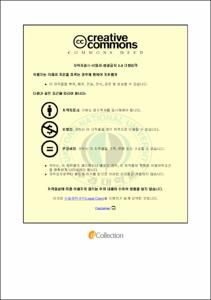지실의 항산화, 항당뇨합병증 및 항균효과
- Abstract
- Abstract
The Poncirus Fructus (PF) is a dride immature fruit of Poncirus trifoliate (L.) Ref., which was distributed throughout Asia, including China and Korea. PF has been used for stomachache, vomiting, nausea, abdominal distension, and swelling of testis in the Oriental Medicine. The PF contains high amounts of a various flavonoids such as poncirin, naringin, hesperidin, neohesperidin, rhoifolin,poncimarin and poncitrin. And it exhibit a wide range of biological activities; they have anti-inflammatory, anti-allergic and anti-virus, antiplatelet and cancer chemopreventive properties. It is well known that the beneficial effects on health of flavonoids are due to their antioxidant and phytoestrogenic properties. Still, further study is needed to investigate bio-active components of Poncirus Fructus with a large quantity of flavonoid and its antioxidant activity in a variety of experimental conditions. In order to investigate antioxidant effects of methanol extracts of Poncirus Fructus and fractions extracted by systematic fractionation using DPPH radical scavenging activity, ABTS radical scavenging activity, inhibitory activity of generation of reactive oxygen species (ROS), peroxynitrite scavenging activity, ACE inhibitory activity, and consider their effects on diabetic complications, therefore, advanced glycation end products (AGEs) formation inhibitory activity and lens aldose reductase inhibitory activity were conducted through in-vitro methods. Then, Poncirus Fructus antibacterial effects were examined. In Poncirus Fructus DPPH radical scavenging activity, EtOAc fraction showed the largest scavenging activity at 240.78 μg/ml, of various extracts and fractions and showed weaker scavenging activity than L-ascorbic acid (IC50 value:10.30 μg/ml). In Poncirus Fructus ABTS radical scavenging activity, EtOAc fraction showed the largest scavenging activity at 29.70 μg/ml, of various extracts and fractions and showed weaker scavenging activity than L-ascorbic acid (IC50 value: 5.43 μg/ml) and Trolox (IC50 value: 3.33 μg/ml). In relation to ONOO-scavenging activityIC50 values (μg/ml) of MeOH extract and fraction of Poncirus Fructus, EtOAc fraction had the largest scavenging activity, followed by H2O fraction, n-BuOH fraction, CH2Cl2 fraction and MeOH fraction. Then, a control substance, L-penicillamine displayed 50 percent of ONOO- scavenging activity at 3.69 μg/ml. Seeing that EtOAc fraction showed relatively higher ONOO-scavenging activity at 17.20 μg/ml, although it was lower than a control substance, it is assumed that EtOAc fraction contains more ONOO- scavenging activity substances than other substances and that it is somewhat polar. It’s been reported that ACE is relevant to the occurrence of cells oxidative stress, reactive oxygen species (ROS) and reactive nitrogen species (RNS), and that it increases the incidence of thrombosis caused by platelet aggregation and adhension. Accordingly, Poncirus Fructus EtOAc fraction showed higher ROS and ONOO- scavenging activities, and ACE inhibitory activity than other fractions. When conducting in-vitro experiments to observe advanced glycation end products (AGEs) formation inhibitory activity and lens aldose reducttase inhibitory activity in Poncirus Fructus methanol extracts, and CH2Cl2, EtOAc, n-BuOH and H2O fractions, EtOAc fraction had the strongest advanced glycation end products (AGEs) formation inhibitory activity and lens aldose reducttase inhibitory activity among them. Then, active component of EtOAc fraction with high advanced glycation end products (AGEs)formation inhibitory activity and lens aldose reducttase inhibitory activity was separated using silica gel chromatography. Structure of the separated compound was measured using spectroscopic methodology of 1H-NMR and 13C-NMR and then, β-sitosterol, prunin and poncirin were identified, by comparing them with literature results. MeOH Ex. and CH2Cl2 fr. were found to have antibacterial effects. Judging from these results, it is considered that Poncirus Fructus extracts used in this research are valuable and possible enough to cure diabetic complications as well as a natural antimicrobial, antioxidant and antidiabetic, and thus is enough competitive with the existing natural functional substances.
- Issued Date
- 2011
- Awarded Date
- 2011. 8
- Type
- Dissertation
- Publisher
- 부경대학교
- Department
- 교육대학원 영양교육전공
- Advisor
- 최재수
- Table Of Contents
- Ⅰ. 서론 1
Ⅱ. 재료 및 방법 5
1. 재료 5
2. 시약 및 기기 5
2-1. 시약 5
2-2. 기기 6
3. 방법 7
3-1. 추출 및 분획 7
3-2. 성분 분리 9
3-3. 지실 EtOAc 획분의 성분 분리 9
4. 활성 실험 11
4-1. DPPH radical 소거활성 11
4-2. ABTS radical 소거활성 14
4-3. 활성산소종 생성 억제 활성 16
4-4. Peroxynitrite 소거 활성 20
4-5. ACE 저해활성 23
4-6. 최종당화물 형성 억제 활성 24
4-7. Lens aldose reductase 억제활성 25
4-8. Disc diffusion에 의한 항균활성 28
Ⅲ. 결과 및 고찰
1. 지실 MeOH 추출물과 각 획분들의 DPPH radical 소거활성 29
2. 지실 MeOH 추출물과 각 획분들의 ABTS radical 소거활성 31
3. 지실 MeOH 추출물과 각 획분들의 활성산소종 생성 억제활성 33
4. 지실 MeOH 추출물과 각 획분들의 Peroxynitrite 소거 활성 35
5. 지실 MeOH 추출물과 각 획분들의 ACE 저해활성 38
6. 지실 MeOH 추출물과 각 획분들의 최종당화물 형성 억제활성 40
7. 지실 MeOH 추출물과 각 획분들의 Lens aldose reductase억제활성 42
8. 지실 EtOAc획분에서 분리된 화합물 44
9. 지실 MeOH 추출물과 각 획분들의 항균효과 48
Ⅳ. 요약 및 결론 50
Ⅴ. 참고 문헌 53
- Degree
- Master
- Files in This Item:
-
-
Download
 지실의 항산화, 항당뇨합병증 및 항균효과.pdf
기타 데이터 / 1.66 MB / Adobe PDF
지실의 항산화, 항당뇨합병증 및 항균효과.pdf
기타 데이터 / 1.66 MB / Adobe PDF
-
Items in Repository are protected by copyright, with all rights reserved, unless otherwise indicated.